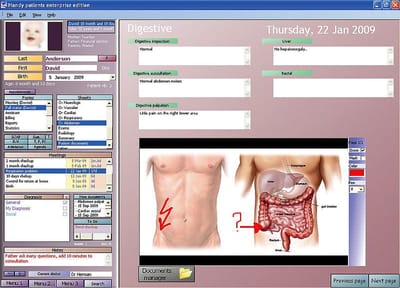Doctors have a busy schedule, so if you proactively provide them with information about your health, rather than have them fish it out of you, so much the better. Here are some tips:

Electronic medical record.
Pic: Wikimedia commons
Be specific about what brings you to doctor. Explain the symptoms, mention duration of symptoms, any precipitating factor that you think has brought it up, if chronic then for how long it has been persisting. A few examples…
Pain in the abdomen: site of pain, whether acute or chronic, whether it shifts from where it started from, or radiates to another region, whether aggravated by or relieved by meals / vomiting/ change of posture, or pressure, whether first episode, or have there been previous episodes.
Fever: Whether it is continuous, or follows any particular pattern. Does the fever comes only in evening, is it high grade or low grade. Are any of the glands enlarged, is there any history of infection, is it associated with any rashes, is it recurrent?
Ensure you share past history of any disease, allergies or reaction to any drugs. Do not forget to inform about family history of diabetes /hypertension/ heart disease/cancers, any surgeries undergone, or history of sudden death especially amongst siblings or parents.
What goes into your medical record?
While it is best to maintain a file of all the documents, it helps if you have a document which summarises your medical history, and reports of investigations in a chronological order. You need to update it following every medical consultation.
Those who are tech savvy should save their medical records digitally. Electronic Medical records (EMR) are also a way of maintaining medical records. These are usually password protected, and when required printouts can be taken.⊕